Amid the advancement of COVID-19 vaccination drives across the globe, the confusion and rumours around the efficacy of the vaccines are still rising. People are trying to find answers to their questions like – ”When do they become immune to the virus?”, ”How long does the immunity last?” and many more.
Well, these confusions exist because people tend to believe every rumour they come across, while the World Health Organisation (WHO) has appealed multiple times to only trust the authentic sources about the information related to Coronavirus.
One of the most prevalent confusions around the Coronavirus vaccines these days is how long should a person wait to get the vaccine after getting infected.
Some of the researchers have recently claimed that a person can take the COVID-19 vaccine right after recovering from the disease but only if they do not have any symptoms. The Centers for Disease Control and Prevention (CDC), however, suggests waiting for 90 days from the day you test positive for COVID-19 disease if you haven’t received any shot yet.
The CDC also suggests, people who got infected after receiving their first shot may take the second dose on their scheduled date, but only if their quarantine period is over and they do not have any symptoms.
The CDC has also clarified that if you have had COVID-19 and now you have recovered, you must be having some natural protection against the virus, but it is still unclear how long that immunity is going to last.
COVID-19 vaccination helps protect you by creating an antibody response without you having to experience potentially severe illness or post-COVID conditions. Vaccination can be taken safely post 90 days of successful recovery from COVID.
Dr. M.G. Kartheeka, MBBS, MD
The CDC has suggested not to take the vaccine for at least 90 days if you have undergone an antibody therapy for COVID-19.
Currently, India has vaccinated over 62.5 lakh healthcare workers and frontline workers. The authorities have confirmed that about 3.3 lakh people are being inoculated on a daily basis.
The authorities, however, have cautioned COVID-infected people not to get the vaccine if they have any symptoms of the disease. Moreover, long-haulers, people who have recovered from COVID-19 but still have some symptoms, should consult their physician before taking the shot.
There are plenty of myths that are discouraging people from showing up at the vaccination centres, causing a huge blow to India’s fight against the Coronavirus. Here we have listed a few myths which CDC has described as completely baseless:
Many people around the country believe that those who are taking the vaccine shots are suffering from serious side effects. They agree that the people may suffer from some mild side effects, which are listed below:
More serious side-effects include:
With the kind of results India’s indigenous vaccines are fetching, people have started showing more interest in taking the shot for COVID-19. We, however, have to work together to stop the spread of misconceptions to eventually defeat the disease which had literally confined the world to their houses.
Let’s pledge not to forward any information related to the disease without cross-checking it with the official sources, like the Ministry of Health and Family Welfare, WHO, CDC, etc.
Know your current health status.
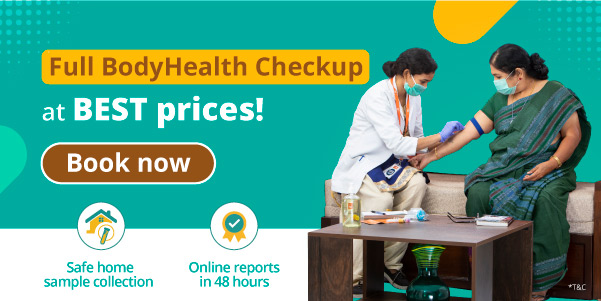
Disclaimer: The information provided here is for educational/awareness purposes only and is not intended to be a substitute for medical treatment by a healthcare professional and should not be relied upon to diagnose or treat any medical condition. The reader should consult a registered medical practitioner to determine the appropriateness of the information and before consuming any medication. PharmEasy does not provide any guarantee or warranty (express or implied) regarding the accuracy, adequacy, completeness, legality, reliability or usefulness of the information; and disclaims any liability arising thereof.
Links and product recommendations in the information provided here are advertisements of third-party products available on the website. PharmEasy does not make any representation on the accuracy or suitability of such products/services. Advertisements do not influence the editorial decisions or content. The information in this blog is subject to change without notice. The authors and administrators reserve the right to modify, add, or remove content without notification. It is your responsibility to review this disclaimer regularly for any changes.
The COVID-19 outbreak has shaken the global health system and economy by its roots. This epidemic is continuously spreading and showing no signs of slowing down. Vaccination could be the only effective and economical means to control or stop this pandemic. Many research institutions and pharmaceutical companies worldwide are currently involved in the development of a suitable coronavirus vaccine.
The development of coronavirus vaccines consists of the following steps e.g. exploratory, pre-clinical and clinical stages.
1. Exploratory stage – It is the basic research in the laboratory of the conceptual idea and development of an antigen against the disease against which a vaccine needs to be produced which usually takes 2–4 years’ timeframe.
2. Pre-clinical stage of development – It uses a platform of tissue-culture and animal testing to assess the safety of the vaccine. They may also suggest the safest starting dose for the next phase of research as well as the safest method of administering the covid vaccine. This stage usually takes 1–2 years and out of 100 potential candidates, 6 usually pass through this stage.
3. Clinical stages of development – Consist of at least 3 stages and the 4th post-marketing safety assessment is also mandatory. These are performed on Human volunteers.

The efforts on coronavirus vaccine began initially in China as soon as the outbreak of coronavirus erupted and then world-over as the disease was declared a pandemic by WHO. Eventually, each country got into the race of developing the vaccine to be 1st in the world to safeguard its population & have an advantage over other countries.
Conclusion:
Covid 19 pandemic is raging, even escalating. That puts pressure on all the countries to rush for a covid vaccine. Under such pressure, countries may authorize emergency use of a vaccine on specified groups without waiting for the completion of Phase III trials which could be harmful. We all have shown great patience till now, let’s continue the same by taking all the safety measures & following Government guidelines.
COVID-19 vaccine drive –
More than 80 million people in India have received at least one dose of a coronavirus vaccine and 11.1 million people have been fully vaccinated in what is the world’s biggest inoculation drive. Here’s how you can book a COVID-19 vaccine for your loved ones.
From March 1 onwards, all people above the age of 60 will be eligible to receive the COVID-19 vaccine. This is the second phase of India’s COVID vaccination programme and it will benefit 10 crore people across the whole nation.
| Vaccine | Developed By | Country | Stage | Update |
| ChAdOx1-S | Oxford University and has been licensed to AstraZeneca | The United Kingdom and India | Phase 3 | South Africa has halted use of the AstraZeneca-Oxford coronavirus vaccine after evidence emerged that the vaccine did not protect clinical-trial participants from mild or moderate illness caused by the more contagious virus variant that was first seen in the country. |
| BNT162b2 Vaccine | Pfizer in collaboration with BioNTech & Fosun Pharmaceuticals | USA, Germany & China | Concluded Phase 3
U.K regulator on Dec 2 declared the vaccine for use. | FDA have described changes to the guidelines for the transportation and storage of the Pfizer-BioNTech vaccine. They explain that it can now be transported and stored at conventional temperatures commonly found in pharmaceutical freezers for a period of up to 2 weeks. If the FDA grants Pfizer’s request, the change could significantly speed up the vaccine rollout in the United States. |
| EpiVacCorona | Vektor Centre, Novosibirsk | Russia | Given regulatory approval | A clinical trial with 40,000 volunteers to begin soon |
| mRNA-1273 Vaccine | Moderna along with NIH | United States | Phase 3 | vaccine shows ‘no specific safety concerns. Results of the first analysis to be published by end of November. Early data shows 95% efficacy. |
| Sputnik V Vaccine | Gamaleya National Research Centre of Epidemiology and Microbiology | Russia | Developed.
Inadequate reports to prove the Vaccine’s efficacy and safety. | Phase 3 results analysis shows 92% efficacy. Phase 2 & 3 Trials in India to begin soon. Approved in Russia. |
| Covaxin | Bharat Biotech | India | Rollout begun | The most reliable longer-term protection against coronavirus is provided through vaccination, experts said noting that the immunity afforded by the presence of antibodies might be expected to last only several months. |
| ZyCoV-D | Zydus Cadila | India | Phase 1 & 2 | Has also begun working on a COVID drug to treat patients |
| CoronaVac Vaccine | Sinovac Life Sciences Co. Ltd. (China) in collaboration with Institution Butantan | China & Brazil | Phase 3 | Trials halted in Brazil. Turkey and Indonesia begin late-phase human trials |
| Ad5-nCoV
Vaccine | CanSino Biologics company in collaboration with Beijing Institute of Biotechnology | China | Phase 3 | Russia & Pakistan to begin Phase 3 trials |
| NVX-CoV2373 | Novavax | US | Phase 3 | Signed an agreement with SII to provide vaccine to low and middle-income countries post-approval |
| Janssen COVID-19 vaccine | Johnson & Johnson | US | Phase 3 | Preparations underway to roll out 1 billion doses in 2021 |
| Sanofi COVID-19 vaccine | Sanofi Pasteur in partnership with Translate Bio & GlaxoSmithKline | US & UK | Phases 1 & 2 | Phase 3 trials to commence by end of December |
Countries all over the world have been fighting against the novel coronavirus using preventive measures such as social distancing and lockdowns. After India being in lockdown for almost half a year, certain relaxations have gradually been implemented to resume economic activities.
Amidst the rising number of new cases daily, the first documented case of reinfection with Covid-19 was reported in a 33-year-old man in Hong Kong almost 4 ½ months after he recovered from his first infection. Closer to home, recently there have been reports of reinfection cases in Bangalore, Delhi and Mumbai, especially amongst healthcare workers. Researchers in India have also reported few cases with asymptomatic reinfection of Covid-19.
In simple words, reinfection means that a person was infected once, cleared the infection and then the person was infected again.
Initial evidence suggests that normally, in case of an infection, the COVID Immunoglobulin G (IgG) antibody is tested positive after 2-3 weeks of the infection. However, in certain cases, the antibody tests negative, which means that the person does not develop immunity after infection. Another possibility could be that the antibodies are short-lived and disappear quickly, thereby making the patient susceptible to reinfection. Thus, reinfection cases mean that the antibodies may not be produced by every patient or if they do develop, they may not last long enough, and therefore, allowing the virus to enter the body and cause the disease again.

The World Health Organisation (WHO) has stated that there is currently no evidence that people, who have recovered from COVID-19 and have antibodies, are protected from a second infection.
Though the patient from Hong Kong experienced a cough, sore throat, fever and headache during his first infection, he was asymptomatic during his second infection. On the contrary, a 25-year-old man in the US developed breathing difficulties and pneumonia after getting re-infected with COVID-19, despite having only mild symptoms during his first infection.
Although there could be a chance that the virus was quite low enough to go undetected and appear negative on a test, only to increase and be picked up in the next test, the question arises as to whether the same virus has resurfaced again or is the current infection caused due to another viral event.
Determining reinfection is quite a challenging process. Genetic material gathered from the first and second swabs of the patient must be analyzed and sequenced by using genetic engineering. If there are differences that show up during sequencing, it means that reinfection has occurred. If the sequences match, then it means that there could be a relapse.
As of now, health officials in India are of the opinion that reinfection with COVID-19 is very rare. Observations till date have shown that only mild infections have occurred and therefore, this issue is not of serious concern now.
As per early-stage reports from vaccine clinical trials being conducted worldwide, the vaccine produces less immunity than an infection. There is still a lot of testing and data that is required in order to ascertain the level of immunity that the vaccine would provide. However, we may require booster doses in order to maintain immunity and avoid infection.

Read more about: Difference between Covaxin vs Covishield Vaccine
Herd immunity is based on the principle that a disease can be eradicated if most of the population is immune to it. With cases of reinfection being reported and confirmed, researchers are increasingly sceptical about achieving herd immunity since it may be impossible to achieve. Once again, more research is needed in order to confirm this fact.
Recovery from COVID-19 does not mean that you are immune to the disease. You should avoid getting complacent and continue maintaining hand hygiene, wearing masks and ensuring social distancing even after recovery.
Since COVID-19 is a relatively new disease, there is not much data available to understand the kind of long-term immunity that patients develop after they have recovered from the infection.
With respect to the novel coronavirus and COVID-19, a lot is still left to be learned. Research is still underway in order to understand various aspects of the disease and its threat of reinfection as well as the vaccine and immunity. In all cases, health officials have advised that the chances of reinfection are rare and not a cause of serious concern.
Is it right to take care of your health first? Yes! It is.

Disclaimer: The information provided here is for educational/awareness purposes only and is not intended to be a substitute for medical treatment by a healthcare professional and should not be relied upon to diagnose or treat any medical condition. The reader should consult a registered medical practitioner to determine the appropriateness of the information and before consuming any medication. PharmEasy does not provide any guarantee or warranty (express or implied) regarding the accuracy, adequacy, completeness, legality, reliability or usefulness of the information; and disclaims any liability arising thereof.
Links and product recommendations in the information provided here are advertisements of third-party products available on the website. PharmEasy does not make any representation on the accuracy or suitability of such products/services. Advertisements do not influence the editorial decisions or content. The information in this blog is subject to change without notice. The authors and administrators reserve the right to modify, add, or remove content without notification. It is your responsibility to review this disclaimer regularly for any changes.
As COVID-19 pandemic continues to wreak havoc worldwide, various data sources suggest that in India the recovery rate of COVID-19 is over 70% as of August 23, 2020. India currently has almost 2.4 million patients who have recovered from COVID-19. However, an important question still looms large – Does a COVID-19 survivor recover completely after hospital discharge?
The SARS-CoV-2 virus primarily affects the respiratory system and can cause life-threatening pneumonia. Current research shows the disease attacks more than just the respiratory system, affecting multiple organs with blood clots and inflammation. Almost 80% of COVID-19 infections are mild or asymptomatic, 15% are severe infections requiring oxygen and 5% are critical infections, requiring ventilation.
Several COVID-19 recovered patients are returning to doctors with conditions including breathlessness, cardiac, lung and other complications. According to a newly published study from Italy, many patients with even milder forms of COVID-19 have persistent symptoms of fatigue and difficulty breathing for up to 60 days post-infection. Furthermore, researchers of this Italian study report that almost 43% of recovered patients have worsened quality of life and almost 87% recovered patients have at least one persistent symptom even after two months of their recovery from the disease.
Post-recovery, some COVID-19 patients may continue to face a range of health issues, depending on the severity of the disease they explained earlier. There is limited evidence regarding long-lasting COVID-19 symptoms after the infection is gone. However, there have been reports of individuals still experiencing symptoms months after the infection, including continued loss of taste or smell, irregular heartbeats, chest pain, shortness of breath, extreme fatigue, learning difficulties, and recurring fever.

It is to be noted that not all recovered patients report long-term complications. Post COVID-19 patients who developed acute respiratory distress syndrome (ARDS) could have a higher risk of long-term health issues.
Some other complications of “long-covid” include fatigue, myalgias (muscle pain), arthralgias (joint pain), cognitive impairment, depression or anxiety, a consultation is advised if you experience any such symptoms.
Dr. Ashish Bajaj – M.B.B.S, M.D.
Post-COVID-19 patients may experience persistent respiratory symptoms, fatigue, decreased functional capacity and decreased quality of life up to 6 months after infection. People who had severe illness with COVID-19 might experience organ damage affecting the heart, kidneys, skin and brain. Inflammation and problems with the immune system can also happen.
Dr. M.G. Kartheeka, MBBS, MD
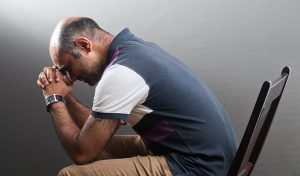
Also Read: What Causes Fingernails to Split Down the Middle: A Comprehensive Examination of the Causes
By adhering to government and local health regulatory guidance and continuing with these safety precautions, we all need to do our part to make sure the COVID-19 virus comes to an end.
It is very important for all of us to take health and safety precautions concerning COVID-19 seriously. With the reopening of businesses and public facilities, many cities are reporting an increase in the number of daily COVID-19 confirmed cases.
The number of COVID-19 cases caused due to COVID-19 is rising worldwide, nearly 7 months after it was first detected. Being a respiratory pathogen, the virus affects both the upper and lower respiratory tract of humans.
With no known cure in sight, and vaccine development still in process, panic has once again gripped everyone after a group of scientists have suggested findings which support the possibility of the COVID-19 virus to be airborne. This means that the risk of transmission of the virus is much higher than what was originally thought.
As per the World Health Organisation (WHO), the airborne transmission may be possible in specific circumstances and settings. These include settings in which medical procedures that generate droplets (smaller than 5 microns) from patients such as bronchoscopy or disconnecting a patient from the ventilator. These droplets could be suspended in the air for some time before settling down on surfaces.
Till date, social distancing and hand washing are the measures suggested by the WHO in order to prevent people from contracting the disease.
Transmission of novel coronavirus occurs much more commonly through respiratory droplets than through surfaces/objects.
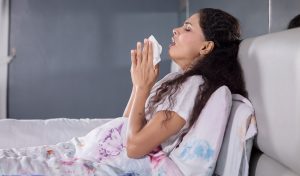
Transmission of virus can occur through direct, indirect, or close contact with infected people through saliva and respiratory droplets which are expelled when an infected person coughs, sneezes & talks. In these situations, respiratory droplets that include the virus can reach the mouth, nose or eyes of a healthy person and can result in infection. Indirect contact transmission involving contact of a person with a contaminated object or surface may also be possible.
Covid is very contagious and people who get infected with the coronavirus can spread it to others 2 to 3 days before symptoms start and are most contagious 1 to 2 days before they feel sick.
Dr. Ashish Bajaj, M.B.B.S., M.D.
Airborne transmission can be explained as the spread of infectious droplets that are released in air over long distances and time. These transmissions can occur during medical procedures that generate droplets or through an infected individual.
A susceptible person could inhale aerosols and could become infected if the aerosols contain the virus in enough quantity to cause infection within the recipient. However, enough proportion of exhaled droplets that evaporate to generate aerosols is required to cause infection in another person is not yet known, but it has been studied for other respiratory viruses. Thus, much more research is needed given the possible implications of such a route of transmission.
The primary mode of transmission of SARS-CoV-2 is via exposure to respiratory droplets carrying the infectious virus from close contact or droplet transmission from presymptomatic, asymptomatic, or symptomatic individuals harboring the virus.
Dr. M.G. Kartheeka, MBBS, MD
There is still not enough or convincing evidence to prove that novel coronavirus is airborne. The experts believe that even if there is no ‘significant’ proof that COVID-19 can be transmitted through droplets. However, the experts suggest that the virus is more infectious in closed settings, without proper ventilation.
They also point out that the idea of droplet transmission due to droplets hanging in the air for a long period of time is capable of infecting a healthy person.
Now more than ever, it is absolutely necessary that you always wear a face mask when you are out of the house.
Asymptomatic patients can be carriers and spreaders of the virus as well. Hence it is essential to maintain social distance (more than 6 feet) when you are outdoors.

Older adults and people with serious chronic medical conditions are at higher risk of serious illness.
Wash your hands with soap or water/ alcohol-based sanitizer frequently. Avoid touching your nose, mouth, or eyes. Make sure that you cover your nose and mouth while sneezing or coughing.
There are chances that a person can get COVID-19 by touching a surface or object. Use common household disinfectants to clean and disinfect frequently touched surfaces such as tables, doorknobs, handles, phones, and switches.
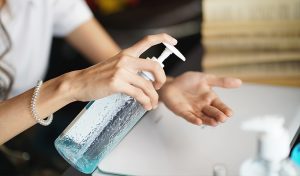
The virus that causes COVID-19 can lead to some flu-like symptoms, such as aches, fever, and cough. If you experience any of these symptoms, you should get in touch with your doctor immediately.
We are yet to completely understand the extent of airborne transmission of coronavirus due to poor ventilation & through infect or an asymptomatic person. Many such unanswered questions about transmission of the virus are still pending and research to seek these answers is ongoing and encouraged.
Pregnancy is a special time full of delight and expectations. But being pregnant can also be stressful. Understandably, you may be worried about the impact of coronavirus disease (COVID-19) on your as well as your baby’s health.
Research is currently being undertaken to evaluate the impacts of COVID-19 infection on pregnant women. Data are limited, as per the ICMR (Indian Council for Medical Research) at present, there is no evidence of scientific literature to suggest that pregnant women are at higher risk of developing a serious illness as compared to the general population.
However, pregnancy itself alters the body’s immune system. Pregnant women can be badly affected by certain respiratory infections, including COVID-19. Hence, pregnant women must take precautions to protect themselves and inform their doctor if they develop any symptoms such as fever, cough or difficulty in breathing.
If you have or think you have COVID-19, you must isolate yourself at home. Mothers can still hold baby skin-to-skin and stay in the same room as them but should wash hands and wear a mask, especially when bonding and breastfeeding.
Dr. M.G. Kartheeka, MBBS, MD
If you are pregnant, you should take the same precautions to avoid COVID-19 infection as other people. You can help protect yourself with these steps:

Pregnant and postpartum women have a higher risk for more severe illness from COVID-19 than non pregnant women.
Dr. Ashish Bajaj – M.B.B.S, M.D.
Emerging evidence now suggests that passage of COVID-19 from mother to baby is probable, although the proportion of pregnancies affected and the significance to the neonate has yet to be determined. At present, there are no recorded cases of breastmilk or secretions from the vagina that have been tested positive for COVID-19. There is currently no scientific evidence suggesting an increased risk of miscarriage or early pregnancy loss concerning COVID-19. (ICMR, Guidance document, dated 12 April 2020).
Stay healthy by getting a COVID-19 vaccine, following guidelines from your doctor, and keeping your prenatal and postpartum care visits, as there is an increased risk of pre-term birth.
Dr. Ashish Bajaj – M.B.B.S, M.D.
Prenatal visits are important to ensure maternal and fetal health. However, given the current global pandemic, we are facing, many obstetricians are either increasing the interval between visits or encouraging telehealth visits.
As per ICMR guidance, pregnant women are advised to attend routine prenatal checkups at 12, 20, 28 and 36 weeks of gestation, unless they meet current self-isolation criteria. For women who have had symptoms of COVID-19, appointments can be postponed until 7 days after the start of symptoms, unless they become severe.
For women who are self-quarantined because someone in their household has possible symptoms of COVID-19, appointments should be deferred for 14 days.
If you are concerned about attending your appointment due to COVID-19, talk to your doctor. Establish a trusting relationship with your doctor and freely ask them any doubts or concerns you may have regarding your pregnancy and delivery.

An important thing to do once your baby is born is to discourage visitors. Also, ensure that all those who are caring for the baby (you and your family) frequently wash hands and wear face masks.
You can safely touch, hold and breastfeed your baby since transmission of the virus through breast milk has not been reported to date (limited scientific data available suggest this is not likely to be a source of transmission). Wear a medical mask when you are in any contact with the baby, even while feeding. Mothers should also follow other measures of preventing infections, such as washing hands, sneezing or coughing in a tissue, wiping down surfaces, etc.
In case of temporary separation of the newborn from a mother with suspected or confirmed COVID-19 (to reduce the risk of spreading the virus to the newborn) following precautions should be taken.
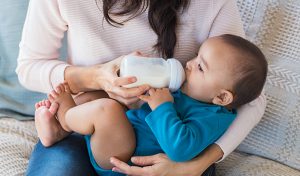
Pandemics can be stressful for everyone. Fear and anxiety about a disease can be overwhelming for both adults and children. Depression during and after pregnancy is common and can be treated. Postpartum depression is the depression that can happen after having a baby. If you think you may be experiencing depression, seek treatment from your doctor as soon as possible.
As the saying goes, it helps to be prepared, not scared. Simple steps like regular hand washing and avoiding crowds can go a long way in protecting you and your baby. Do not stress if your due date is coming close. Hospitals have systems in place to ensure safe deliveries and reduce the risk of infection to newborns. Stay healthy and stay protected.
Also Read: Foods That Fight Nausea During Pregnancy: Guide For Expecting Mothers
Disclaimer: The information provided here is for educational/awareness purposes only and is not intended to be a substitute for medical treatment by a healthcare professional and should not be relied upon to diagnose or treat any medical condition. The reader should consult a registered medical practitioner to determine the appropriateness of the information and before consuming any medication. PharmEasy does not provide any guarantee or warranty (express or implied) regarding the accuracy, adequacy, completeness, legality, reliability or usefulness of the information; and disclaims any liability arising thereof.
Links and product recommendations in the information provided here are advertisements of third-party products available on the website. PharmEasy does not make any representation on the accuracy or suitability of such products/services. Advertisements do not influence the editorial decisions or content. The information in this blog is subject to change without notice. The authors and administrators reserve the right to modify, add, or remove content without notification. It is your responsibility to review this disclaimer regularly for any changes.
The number of COVID-19 cases in India has already crossed the 1.8 lakh mark and continues to steadily rise each day. Staying indoors can help us prevent COVID-19 from spreading. It is also essential for us to maintain personal hygiene as well as hygiene at home to minimize our chances of getting sick.
Transmission of novel coronavirus occurs much more commonly through respiratory droplets than through objects. Current evidence suggests that COVID-19 may remain active for hours to days on different types of surfaces. Therefore, cleaning visibly dirty areas followed by disinfection is the best measure for the prevention of COVID-19 in day to day practice.
Cleaning is the process of removal of germs, dirt, and impurities from a variety of surfaces. It does not kill all germs, but removing them, lowers their numbers and the risk of spreading infection. Disinfection is the process of using chemicals (disinfectants) to kill germs present on different surfaces. If done correctly, it can kill harmful microorganisms. Dettol, Lizol, bleach, rubbing alcohol, sodium hypochlorite, etc. are the various types of disinfectants that are easily available.
According to CDC Disinfection to reduce transmission of COVID-19 at home is likely not needed unless someone in your home is sick or if someone who is positive for COVID-19 has been in your home within the last 24 hours. Clean high-touch surfaces such as doorknobs, tables, and light switches regularly.
Dr. M.G. Kartheeka, MBBS, MD
This is probably the most touched surface in the house. Right from the front door of your house to the handles on cupboard doors and rooms, it is vital to make it a habit to disinfect and wipe all the door handles in the house. Don’t forget to clean and disinfect the refrigerator door handle, table surfaces, metal/plastic/rubber baby toys, chairs and desk surfaces as well.
Think of your mobile phone as your third hand. We tend to check our phones at least 20-30 times a day, helping germs easily transfer from your hands to your mobile phone. Phones should preferably be cleaned with disinfecting wipes gently on exterior parts of phones in switched off mode. Avoid the use of bleach or the entry of moisture through any openings. Many mobile companies have provided recommendations on the cleaning of phones during this COVID-19 pandemic. Check your phone manufacturer website for instructions on what to use to clean your phone to avoid damage to the device.
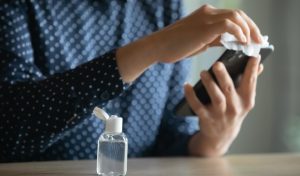
Surfaces must be cleaned with water and soap or a detergent first to remove dirt, followed by disinfection, if you do sanitize or disinfect, clean surfaces first because impurities like dirt may make it harder for sanitizing or disinfecting chemicals.
Dr. Ashish Bajaj – M.B.B.S, M.D.
While you might not be touching your face regularly, you still touch your spectacles very often. Wipe your spectacle frames with a disinfecting wipe or a cloth dampened with disinfectant liquid*. You can also use a sanitiser and a clean, lint-free towel to wipe the lenses.
Cleaning our laptops is more important than ever now that we are working from home. Use a disinfectant wipe or a soft, lint-free cloth and wipe on the top and sides of each key, preferably in a switched off mode. Also, clean the surface and bottom of the keyboard thoroughly. Entry of moisture or any disinfectant liquid through any openings must be avoided.

We all find ourselves watching quite a bit of TV during this lockdown. This means that your remotes need a good cleaning since it is being handled by everyone at home. Remember to clean and disinfect your remote gently with a disinfectant wipe or a cloth soaked in disinfectant liquid. Needless to say, the entry of moisture and disinfectant liquid inside the remote control must be avoided during cleaning.
Every packed grocery item should be wiped with soapy water or sanitiser (food packets, food bags, etc.) While purchasing groceries, make sure that you use cloth bags. Wash and disinfect them after every purchase.
Clean your fruits and vegetables under running water. You may soak them in a solution of salt or baking soda with water for some time. Rinse the items with clean water, dry and store them normally.
If you are visiting the grocery or vegetable store, it means that you are taking your purse/wallet out. Add your wallet to the list of things you need to sanitize after visiting a store. Use a small amount of hand sanitiser* applied to the surface of the purse with a tissue or a clean cloth. You can disinfect keys (without remote controls) and coins by soaking them in a soap solution of dishwashing liquid for a short amount of time. After this, rinse them with clean water and leave them in the sun to dry. As far as possible, try and use digital or card payments instead of cash. After handling/touching a card or cash for transaction/payment, always clean your hands with an alcohol-based hand sanitiser.
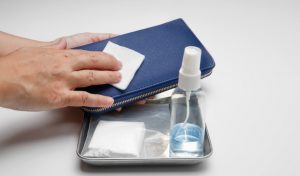
Nowadays, you are probably using your kitchen counter numerous times a day. Areas where food is stored or prepared have more microbial contamination than other places in the home.
Have you stopped to think about the number of times you switch on and off the lights and fans at home? Switches and doorbells can be cleaned with disinfectant wipes once every couple of days.
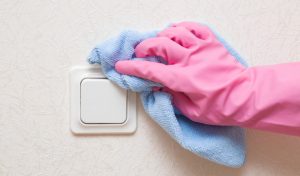
*Disinfectant wipes should have at least 60% ethanol or 70% isopropanol content while sanitisers should have at least 60% ethanol content.
It has become more important than ever to make sure that our houses stay virus-free and clean. Make sure you wash your hands regularly to minimize the spread of germs inside your house. Stay safe!
Disclaimer: The above information has been prepared by a qualified medical professional and may not represent the practices followed universally. The suggestions listed in this article constitute relatively common advice given to patients, and since every patient is different, you are advised to consult your physician, if in doubt, before acting upon this information. Lupin Limited has only facilitated the distribution of this information to you in the interest of patient education and welfare.
The news about the COVID-19 pandemic is everywhere: from the front pages of newspapers and headlines on news channels, to even our daily conversations at our homes. Constant exposure to such updates can leave us overwhelmed. Children especially can begin to feel increasingly anxious and confused since their daily routines have been completely disrupted due to the current state of lockdown.
So, how can parents help their kids manage their fears, while at the same time be aware and alert themselves? As a parent or guardian, you will want to make sure that your children get answers to all their questions and doubts regarding coronavirus. Speaking to them can help clear their doubts, help them understand what is happening as well as make them feel safe and cope with the current situation.
Most children have already heard about COVID-19 from TV as well as seen people wearing face masks. Therefore, not talking to them will make them even more confused. Ask them what they’ve heard about coronavirus and if they have any questions or doubts regarding this. This will help you understand how much they know as well as if they have any wrong information.
Explain things to them in a calm and reassuring way. Don’t offer more information than what they ask about. If they ask something that you don’t know the answer to, let them know about it. If they require information (especially older children), help them get access to age-appropriate content so that they don’t end up watching the news which scares them.
Teach children that following good habits like regularly washing their hands, covering their mouth and nose while sneezing and coughing, eating healthy food, getting proper sleep can help them stay in good health and even help in avoiding the spread of the infection to others.
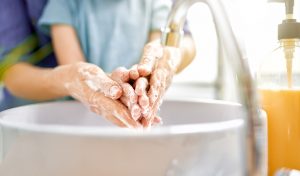
Watching news such as the number of infected cases or even the death rates worldwide can frighten children. Younger children may feel reassured if you let them know that doctors and nurses in hospitals are treating and taking care of people who get sick. Older children may also feel comforted by knowing that scientists and researchers are working on a vaccine for COVID-19. Watch the news with your children so that you are aware and can filter what kind of information they are obtaining.
Children tend to worry more about their family and friends than themselves. If they hear that older adults are more likely to fall sick, they may get worried about their grandparents. Help them call or video call their grandparents and relatives to reassure them that they are in good health. Helping them connect virtually with their friends will make them feel a sense of normalcy.
Children might feel anxious and upset due to the lockdown and the fact that they have to be constantly indoors. Remind them that it is alright to be upset right now and encourage a hopeful outlook for the future.
Stick to or create new family routines, such as learning or studying, mealtimes, chores, playtimes and bedtimes. This can help children feel in control of the situation.
There may be times of constant news about COVID-19 from all types of media that may heighten fears about the disease. Limit reading, hearing or watching the news. Also, limit social media use that may expose your children to rumours and false information. Be cautious about discussing the news and your fears in front of your children.
Connect with friends and family members using the phone and video calls. This can help them avoid feeling isolated and can build and maintain relationships.

If you observe persistent problems with your child’s sleep patterns, eating habits or difficulty concentrating on typical tasks, or if your children have a persistent sense of hopelessness, excessive sadness or overwhelming worry, contact your doctor for advice.
It is important to continue having open communication with your family. If your child is afraid or anxious, you don’t want them to keep it to themselves. While we don’t know when these stressful times will end, we can definitely offer comfort and reassurance to our children, discuss factual information and encourage a healthy dialogue about their feelings.
Also Read: Constipation in Kids: A Research-Based Guide for Parents
Disclaimer: The information provided here is for educational/awareness purposes only and is not intended to be a substitute for medical treatment by a healthcare professional and should not be relied upon to diagnose or treat any medical condition. The reader should consult a registered medical practitioner to determine the appropriateness of the information and before consuming any medication. PharmEasy does not provide any guarantee or warranty (express or implied) regarding the accuracy, adequacy, completeness, legality, reliability or usefulness of the information; and disclaims any liability arising thereof.
Links and product recommendations in the information provided here are advertisements of third-party products available on the website. PharmEasy does not make any representation on the accuracy or suitability of such products/services. Advertisements do not influence the editorial decisions or content. The information in this blog is subject to change without notice. The authors and administrators reserve the right to modify, add, or remove content without notification. It is your responsibility to review this disclaimer regularly for any changes.
In these uncertain times, you could find yourself anxious, stressed and nervous about the future. Researchers have observed that large-scale disasters such as pandemics, tend to cause an increase in mental health issues such as depression, substance abuse and behavioural disorders.
The regular news of the current COVID-19 pandemic, with its vast number of infected cases as well as casualties, is mentally affecting more people each day.
Lockdowns have been imposed by certain countries including India to contain the spread of the virus. Long durations of being indoors lead to feelings of restlessness, annoyance, financial pressures, isolation, boredom and disinterest.
These feelings are completely natural and reasonable and reflect our want for survival. That said, it is important to keep in mind that although worry is normal, panic can prevent us from being rational/logical, which are skills we need at times of such difficulty.
1. Limit your news/media exposure: We are constantly exposed to extensive information about COVID-19 through the news, social media, discussions with family and friends. Constant exposure to such news creates negative effects such as feelings of anxiety, fear and stress. Take measures to ensure that you are away from receiving and spreading rumours and false information. Follow reliable news resources. Avoid watching the news all the time but stay updated regarding the guidelines and precautions advised by the Ministry of Health and local public health authorities.
2. Plan activities with your family: The lockdown has allowed us to spend time with our families which was not possible earlier, because of our hectic lifestyle. However, spending too much time together also has its drawbacks. Irritation, anger and frustrations arise because we are restricted from going out. Try and plan fun and relaxing activities which the whole family can participate in, such as board games, movies, arts and crafts or even exercising. Children tend to get irritable since they cannot go out and play, so engage them in activities like games or involve them in household activities. This will help in keeping them occupied as well as ensure more helping hands for household chores.
 3. Stay connected: Take out some time during your day to connect virtually with your near and dear ones who stay away, especially those who are elderly or alone. Catch up with your friends or social circle online through video calls. Check up on the elderly or disabled in your neighbourhood and offer to help if they need something. Such deeds will have a positive impact on your mental state.4. Relax and Meditate: You do not have to be occupied all the time. Sometimes it’s nice to take a break and do nothing but relax and breathe. Set aside some quiet time for yourself where you can do something relaxing like taking a long bath or reading a book. Practices such as yoga and meditation are very beneficial in case you feel overwhelmed or anxious.Read More: 7 Different Relaxation Techniques to Help Fight Stress
3. Stay connected: Take out some time during your day to connect virtually with your near and dear ones who stay away, especially those who are elderly or alone. Catch up with your friends or social circle online through video calls. Check up on the elderly or disabled in your neighbourhood and offer to help if they need something. Such deeds will have a positive impact on your mental state.4. Relax and Meditate: You do not have to be occupied all the time. Sometimes it’s nice to take a break and do nothing but relax and breathe. Set aside some quiet time for yourself where you can do something relaxing like taking a long bath or reading a book. Practices such as yoga and meditation are very beneficial in case you feel overwhelmed or anxious.Read More: 7 Different Relaxation Techniques to Help Fight Stress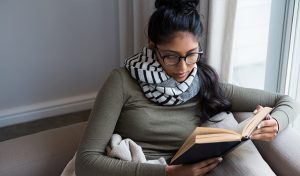 5. Focus on Positive thoughts: In these difficult times, it is very easy to focus on the negatives and get stressed. Instead, try and distance the negative thoughts and focus on the positive aspects of your life. Consider keeping a gratitude journal and list down things you are grateful for. Do not overburden yourself with tasks to do; instead, set reasonable deadlines and try to achieve them. Reward yourself for your small achievements.
5. Focus on Positive thoughts: In these difficult times, it is very easy to focus on the negatives and get stressed. Instead, try and distance the negative thoughts and focus on the positive aspects of your life. Consider keeping a gratitude journal and list down things you are grateful for. Do not overburden yourself with tasks to do; instead, set reasonable deadlines and try to achieve them. Reward yourself for your small achievements. If you still feel increasingly stressed and overwhelmed by the current COVID-19 pandemic situation and your mental health issues go on for days without getting better, you may contact COVID-19 national psycho-social toll-free number at 080-46110007 or consult your doctor or mental health professional.
Lupin has also launched a ‘Jan Kovid’ Helpline (1800-572-6130) for the citizens of Mumbai to resolve queries about COVID-19 and help those suffering from stress/anxiety. Backed by a team of general physicians, psychologists, respiratory physicians and psychiatrists, the helpline number will offer free consultation and respond to all queries related to COVID-19. The service is available in Marathi, Hindi, Gujarati and English, and will be operational all days from 8 am – 8 pm.
Also Read: Essential Oils for Anxiety: A Research-Based Holistic ApproachIncorporate these tips in your daily life to keep anxiety at bay and tide over the lockdown period. Above all, stay indoors to protect yourself.
Also Read: How to Reduce Anxiety Immediately: Quick and Effective TechniquesDisclaimer: The information provided here is for educational/awareness purposes only and is not intended to be a substitute for medical treatment by a healthcare professional and should not be relied upon to diagnose or treat any medical condition. The reader should consult a registered medical practitioner to determine the appropriateness of the information and before consuming any medication. PharmEasy does not provide any guarantee or warranty (express or implied) regarding the accuracy, adequacy, completeness, legality, reliability or usefulness of the information; and disclaims any liability arising thereof.Links and product recommendations in the information provided here are advertisements of third-party products available on the website. PharmEasy does not make any representation on the accuracy or suitability of such products/services. Advertisements do not influence the editorial decisions or content. The information in this blog is subject to change without notice. The authors and administrators reserve the right to modify, add, or remove content without notification. It is your responsibility to review this disclaimer regularly for any changes.

Links and product recommendations in the information provided here are advertisements of third-party products available on the website. PharmEasy does not make any representation on the accuracy or suitability of such products/services. Advertisements do not influence the editorial decisions or content. The information in this blog is subject to change without notice. The authors and administrators reserve the right to modify, add, or remove content without notification. It is your responsibility to review this disclaimer regularly for any changes.
Next Page »« Previous Page